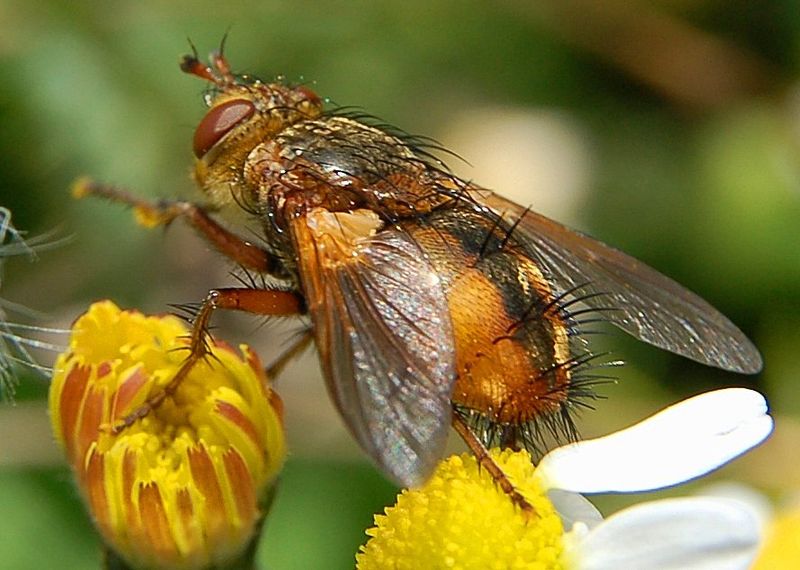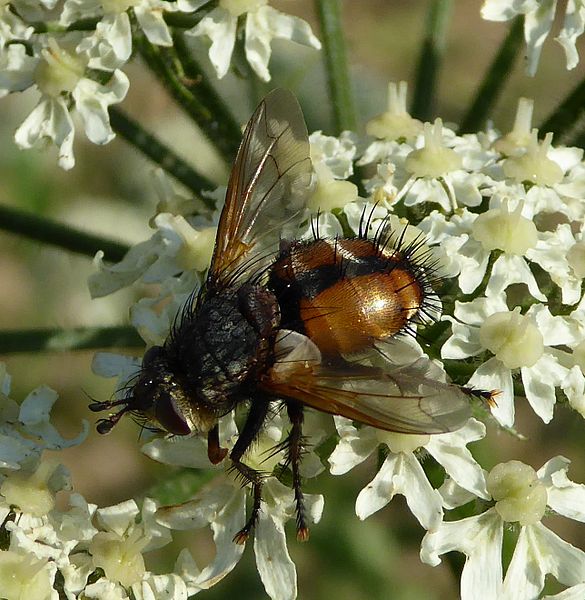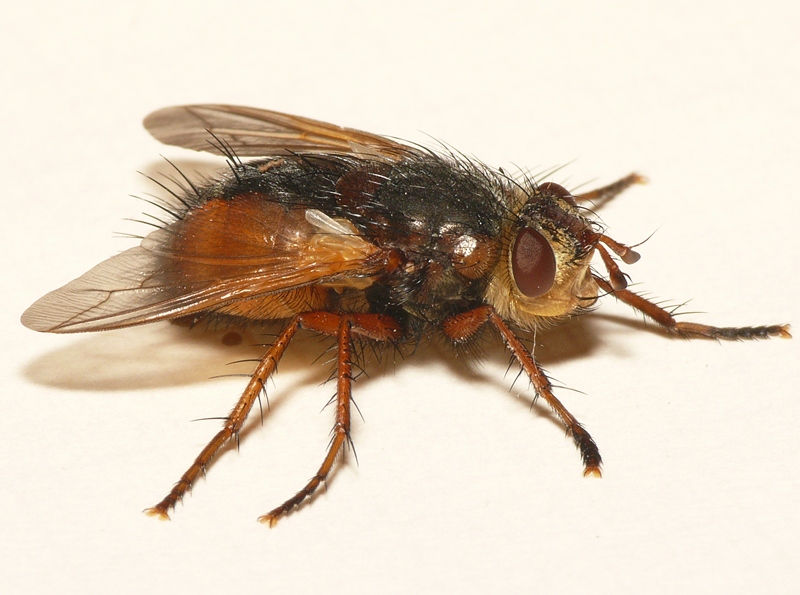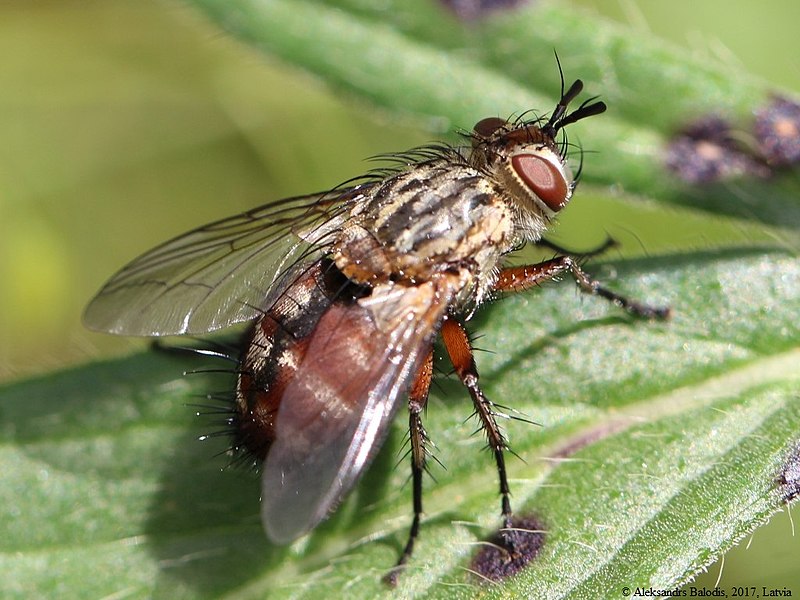How to split Tachina fera type tachinids in photos
One of the most difficult problems is how to confirm/verify the identification of photos of flies that look quite like Tachina fera. I’d include in that group any of the following species: Tachina fera, Tachina magnicornis, Nowickia ferox, Linnaemya vulpina, Peleteria rubescens, Peleteria iavana & male Nemoraea pellucida. They’re all fairly large, bristly flies with a brown thorax and orange-sided abdomen and in this article I’ll try to knock them down one by one by removing the easiest first.
This is a very basic draft key that should help when identifying from photos but treat with care as it is just a first draft. Send me comments if you agree or disagree:
- Hairy eyes?
- Protruding mouth edge, slim-bodied fly, usually found on heathland = Linnaemya vulpina [common on heathland]
- Flat face profile, slightly smaller head than usual, very wide abdomen, hairy calyptrae (but this is hard to spot) = Nemoraea pellucida [very rare in southern England – few modern records]
- Bare eyes?
- Black legs, sometimes with a slightly paler tibia?
- Two strong black “Peleteria” bristles on the lower parafacial area; body ground colour basically dark brown; abdominal mid-stripe fairly parallel sided?
- Second antennal segment orange; strong dusting across most of each tergite; reddish-orange abdominal side patches = Peleteria iavana [was called varia, restricted to the Channel Isles]
- Second antennal segment dark/black; weak dusting on the posterior of each tergite; abdominal side patches distinctly orange = Peleteria rubescens [very rare in southern England – few modern records]
- Lower parafacial bare; body & leg ground colour dark black; abdominal mid-stripe usually jagged and made from distinct overlapping black diamonds = Nowickia ferox [common in southern England]
- Two strong black “Peleteria” bristles on the lower parafacial area; body ground colour basically dark brown; abdominal mid-stripe fairly parallel sided?
- Orange or light brown legs?
- fore tarsus brown/orange; frons generally narrower (M 0.68-1.08x, F 0.94-1.28x one eye); abdominal mid-stripe tapers towards the end of the abdomen; males: fore tarsal claws as long as the last 2 tarsal segments & usually without any outer orbital bristles (rarely 1) = Tachina fera [very common across the UK]
- fore tarsus black/brown; frons wider (M 1.10-1.39x, in F 1.27-1.55x one eye); abdominal mid-stripe widens towards the end of the abdomen; male fore tarsal claws shorter than last 2 tarsal segments & 1-2 outer orbital bristles present = Tachina magnicornis [restricted to the Channel Isles]
- Black legs, sometimes with a slightly paler tibia?
The most difficult splits are still between the very similar Tachina species but I think these will always be difficult. You only have to examine DNA barcodes of these species to notice that they are often wrongly identified.
It can also be a bit tricky to split Peleteria rubescens from Tachina fera/magnicornis where the insect’s face is obscured and the legs are fairly pale or obscured. I’ve noticed that in this case the Peleteria tend to have heads that are ever so slightly wider than the thorax and the abdomen isn’t much wider than the thorax; while the Tachina have narrower heads and wider abdomens. Also the Peleteria tend to have whiter/greyer thorax dusting on a slate-grey/black ground colour, while the Tachina dusting is yellowish-brown on a dark brown ground colour.
What follows is a little gallery of open-access images to help you visualise the features I’ve used above.

Nowickia ferox – Martin Cooper 
Tachina fera – Thomas Bresson 
Tachina fera – Thomas Bresson 
Tachina fera – Luc Viatour 
Tachina magnicornis – Roland Gromes 
Tachina magnicornis – Dick Belgers 
Linnaemya vulpina – Janet Graham 
Linnaemya vulpina – AfroBrazilian 
Nemoraea pellucida (male) – Hectonichus 
Nemoraea pellucida – Rui Andrade 
Peleteria iavana – unknown 
Peleteria rubescens – Rui Andrade